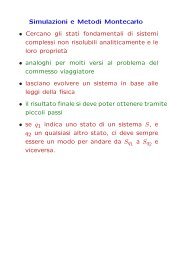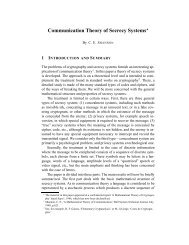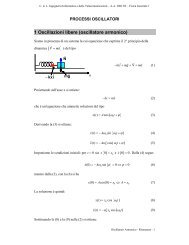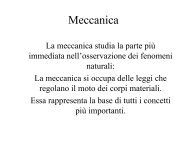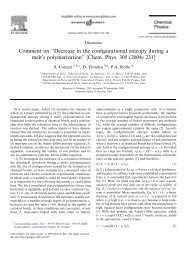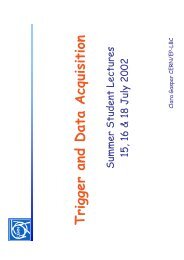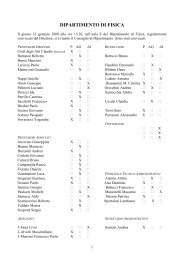The Form Factors of the Nucleons: Present Status - Fisica
The Form Factors of the Nucleons: Present Status - Fisica
The Form Factors of the Nucleons: Present Status - Fisica
You also want an ePaper? Increase the reach of your titles
YUMPU automatically turns print PDFs into web optimized ePapers that Google loves.
Results for <strong>the</strong> proton’s G Ep and G Mp form factors had reached apparent<br />
stability by 1990’s, indicating that “scaling”, i.e. <strong>the</strong> fact that G Ep/G D,<br />
G Mp/μ pG D are approximately independent <strong>of</strong> Q 2 , and ≈1, may be true.<br />
In <strong>the</strong> late 1990s it became experimentally feasible to obtain <strong>the</strong> nucleon<br />
form factors from double-polarization experiments, also based on <strong>the</strong><br />
assumption <strong>of</strong> single photon exchange, or Born approximation, as had been<br />
first suggested by Akhiezer and Rekalo in <strong>the</strong> late sixties.<br />
Spectacular experimental progress in measuring G E/G M followed <strong>the</strong><br />
opening <strong>of</strong> Jefferson Lab, for both proton and neutron. Our<br />
understanding <strong>of</strong> <strong>the</strong> shape, and charge and current distributions<br />
in <strong>the</strong> nucleon has increased considerably, and changed drastically.<br />
New information on hadron structure, such as role <strong>of</strong> quark orbital<br />
angular momentum, transverse charge density distribution, dressed<br />
quark form factor has followed in short order.<br />
2/17/2013 C.F. Perdrisat SAEMP Trento 2013 3



